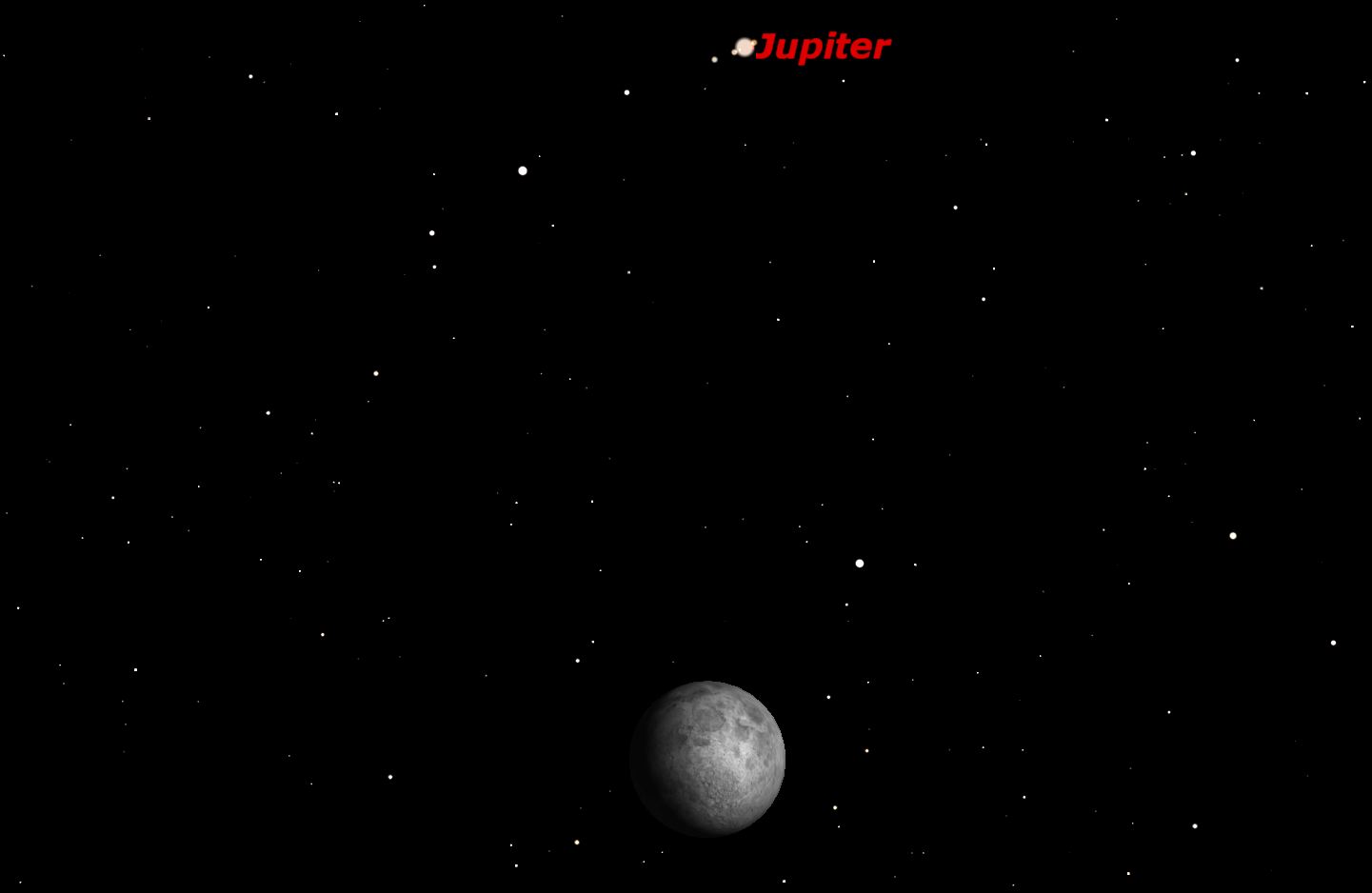Watch the Moon and Jupiter Pair Off Sunday Night

If your sky is clear early Sunday evening (April 17), be sure to look up to the southeast about an hour or so after sundown for a stunning cosmic duet. There, more than halfway up in the southeast sky you'll find an eye-catching sight: You'll immediately see the moon, which will be at its waxing gibbous phase, 85 percent illuminated, en route to becoming full during the overnight hours late Thursday night (April 21) to early Friday morning (April 22).
But on this particular Sunday evening, you'll also notice a very bright, silvery "star" shining with a steady glow to the left or upper left of the moon. That's not a star: it's the biggest planet in our solar system, Jupiter. Moon and planet will keep each other company as they move across the night sky through the course of the night.
Casual observers looking skyward will almost certainly wonder what that bright object near the moon happens to be, and I would encourage all of my fellow broadcast meteorologists to let their listeners and viewers in on what they're looking at on that night. [Big Dipper, Lyrid Meteors And More In April 2016 Skywatching (Video)]
Jupiter is ideally placed for evening viewing, shining high and free of trees and other obstructions, and where even the distorting effect of the atmosphere is at its least. Jupiter currently shines in the constellation Leo. It reaches its highest point in the sky — transiting the meridian, as the astronomers would say — soon after 10 p.m. local time, and it sets during the predawn hours, around 4:40 a.m.
For amateur astronomers, Jupiter is the best of the planets; a superb telescopic object. Its disk shows more illuminated surface area than all the other planets combined. Users of the very smallest telescopes or even steadily held binoculars can identify some (or all four) of Jupiter's bright moons at any time.
But the planet's disk itself also draws a lot of attention. In large telescopes one can view its cloud belts; sometimes one or more can look strongly disturbed, full of knots and sprouting festoons or on the other side of the coin, perhaps looking like pale belts crossing the planet. Observing from Cebu, Philippines, Christopher Go, an assiduous watcher of Jupiter, recently described the famous Great Red Spot as "well resolved" with a dark core and containing dark streaks and tiny ovals. As always, seeing much detail on Jupiter requires a good quality telescope, good atmospheric seeing and patience behind the eyepiece.
Finally, if clouds hide your view of the moon and Jupiter on Sunday, don't fret. They'll be together again on May 14.
Breaking space news, the latest updates on rocket launches, skywatching events and more!
Joe Rao serves as an instructor and guest lecturer at New York's Hayden Planetarium. He writes about astronomy for Natural History magazine, the Farmer's Almanac and other publications, and he is also an on-camera meteorologist for News 12 Westchester, N.Y. Follow us @Spacedotcom, Facebook and Google+. Original article on Space.com.

Joe Rao is Space.com's skywatching columnist, as well as a veteran meteorologist and eclipse chaser who also serves as an instructor and guest lecturer at New York's Hayden Planetarium. He writes about astronomy for Natural History magazine, Sky & Telescope and other publications. Joe is an 8-time Emmy-nominated meteorologist who served the Putnam Valley region of New York for over 21 years. You can find him on Twitter and YouTube tracking lunar and solar eclipses, meteor showers and more. To find out Joe's latest project, visit him on Twitter.

